Introduction to Engine Piston Rings
Engine piston rings are small yet vital components in an engine. They play a crucial role in maintaining an engine’s efficiency and performance. By sealing the combustion chamber, they prevent the leakage of gases, ensuring optimal power production. Additionally, piston rings help regulate oil consumption and enable proper heat transfer, keeping the engine functioning smoothly.
Overview of Piston Rings
Piston rings are circular metal bands located around the piston. They ensure tight sealing between the piston and the cylinder wall. Their primary functions include controlling oil, sealing gases, and transferring heat. Typically, an engine uses multiple piston rings, each serving a specific purpose. The design and material of these rings vary depending on the engine type and requirements.
Importance in Engine Performance
Engine piston rings are essential for maintaining overall engine efficiency. They reduce friction and minimize wear inside the cylinder. Properly functioning rings ensure the complete combustion of fuel, enhancing power output. They also help maintain fuel efficiency by controlling oil usage. When in good condition, piston rings extend the life of the engine and prevent costly repairs.
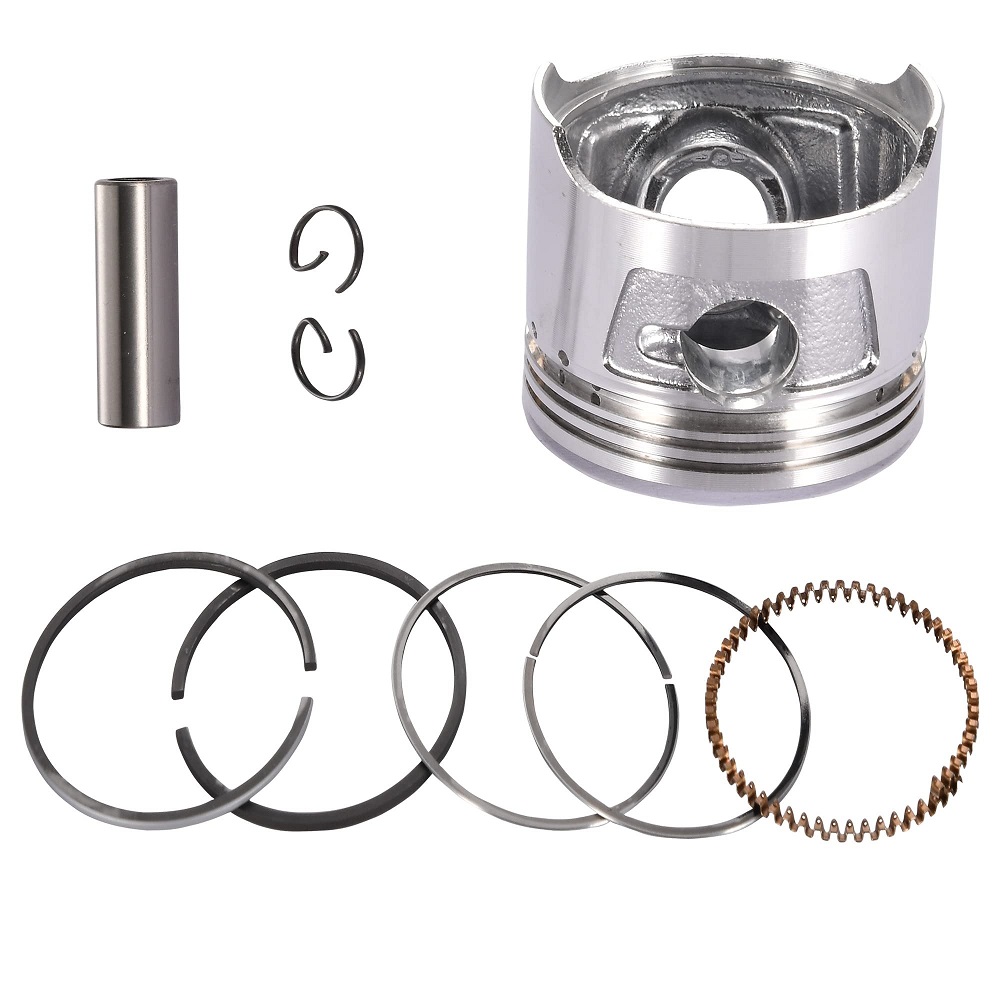
Types of Engine Piston Rings
Engine piston rings come in different types, each serving distinct functions in the engine. These rings work together to ensure efficient engine performance and durability. Here are the main types:
Compression Rings
Compression rings seal the combustion chamber. They prevent combustion gases from leaking into the crankcase. These rings also transfer heat from the piston to the cylinder wall. Typically, compression rings are located at the top of the piston. Their design ensures maximum pressure sealing, which enables efficient fuel combustion and power output.
Oil Control Rings
Oil control rings manage the lubrication of the cylinder walls. They scrape excess oil off the cylinder surface and return it to the crankcase. This prevents oil from mixing with the fuel-air mixture in the combustion chamber. Properly functioning oil control rings help reduce oil consumption and keep the engine running smoothly.
Scraper Rings
Scraper rings, often mistaken for oil control rings, have a distinct function. They assist in removing oil buildup on the cylinder walls. Additionally, scraper rings help redirect the oil downward. This keeps the cylinder from becoming excessively lubricated, ensuring better combustion and reducing carbon deposits.
How Piston Rings Work
Engine piston rings perform key tasks to maintain engine functionality and efficiency. Their design ensures smooth engine operations, reduces friction, and extends engine life.
Sealing the Combustion Chamber
Piston rings create a tight seal between the piston and cylinder wall. This seal prevents combustion gases from escaping into the crankcase. By maintaining pressure in the combustion chamber, they ensure efficient fuel combustion. This boosts engine power and reduces harmful emissions.
Controlling Oil Consumption
Piston rings regulate oil usage in the engine. Oil control rings scrape excess oil from cylinder walls. This oil returns to the crankcase, preventing it from entering the combustion chamber. Proper oil control reduces smoke, minimizes carbon buildup, and improves overall engine efficiency.
Heat Transfer Functions
Piston rings transfer heat from the piston to the cylinder wall. This helps maintain optimal engine temperature. Proper heat transfer prevents overheating and reduces wear on engine components. This extends the engine’s operational life and enhances performance.
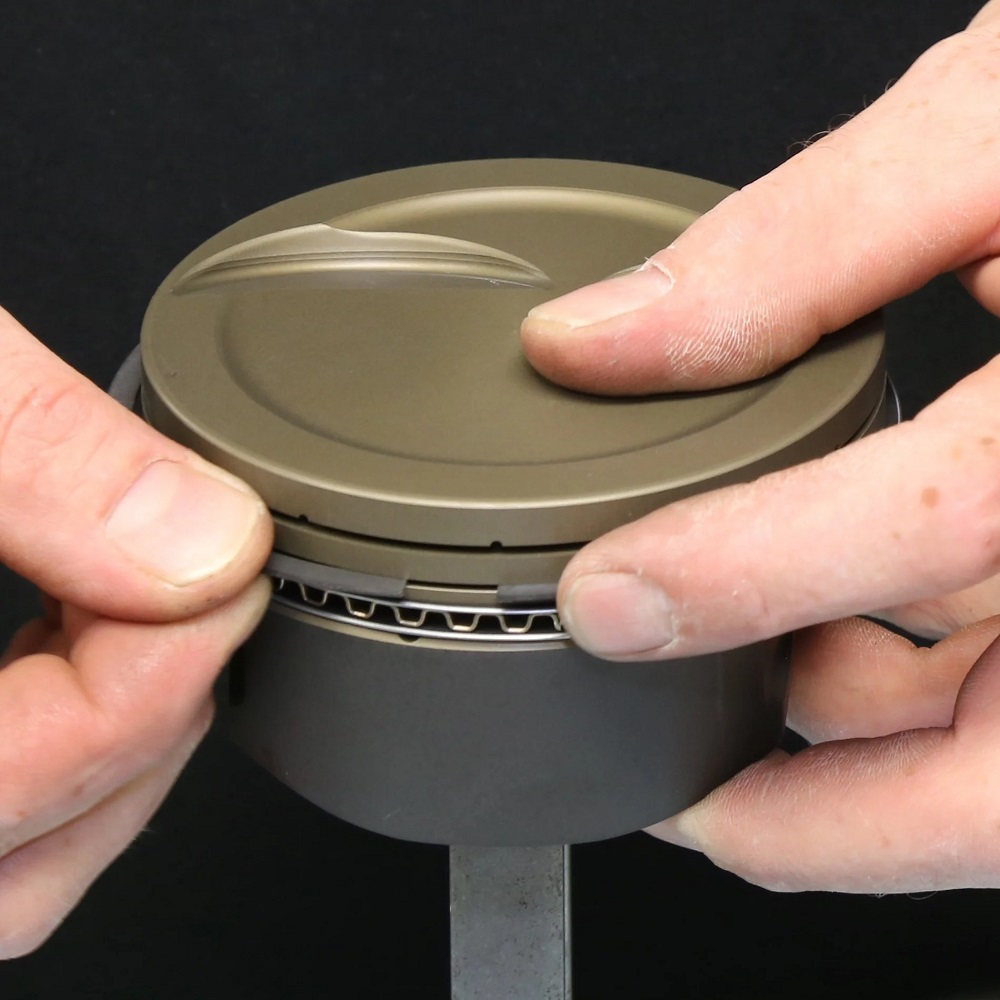
Common Issues with Piston Rings
Engine piston rings can encounter various issues over time. Recognizing these problems early is key to maintaining engine efficiency. Understanding common symptoms and causes helps in addressing these issues effectively.
Symptoms of Worn or Damaged Piston Rings
Worn or damaged piston rings affect engine performance. Below are common signs to watch for:
- Excessive Smoke from the Exhaust: Blue or white smoke may indicate oil leaking into the combustion chamber.
- Increased Oil Consumption: Frequent oil refills suggest oil is bypassing the piston rings.
- Loss of Compression: A decrease in engine power can signal poor sealing in the combustion chamber.
- Decreased Fuel Efficiency: Worn rings strain the engine, leading to higher fuel usage.
- Poor Engine Performance: Misfires, sluggish acceleration, or inconsistent idling can point to piston ring wear.
Addressing these symptoms promptly can prevent further engine damage.
Causes of Piston Ring Failures
Several factors can lead to piston ring issues. Common causes include:
- Poor Lubrication: Insufficient or low-quality oil can increase friction and wear.
- Overheating: High engine temperatures can warp or damage piston rings.
- Carbon Build-up: Carbon deposits on the rings can cause them to stick or lose functionality.
- Dust or Debris: Contaminants entering the engine can scratch the cylinder walls and rings.
- Age and Wear: Over time, piston rings may lose their seal due to normal wear.
Understanding these causes helps in taking preventative measures to extend piston ring life.
Preventative Maintenance for Piston Rings
Proper maintenance ensures piston rings work effectively and extend engine life. Preventing issues before they arise helps avoid costly repairs and boosts overall performance. Below are key aspects of preventative maintenance.
Regular Engine Inspection
Regular engine checks help detect piston ring problems early. Look for signs like excessive smoke, oil consumption, or reduced engine power. Monitor compression levels to ensure proper sealing in the combustion chamber. Inspect cylinder walls and pistons for wear or carbon build-up. Addressing issues immediately prevents further damage and maintains efficiency.
Using High-Quality Engine Oil
High-quality oil reduces friction and wear on piston rings. Choose oils suited to your engine type and operating conditions. Regularly replace oil as per manufacturer guidelines to maintain lubrication. Avoid mixing different oil types, as this may reduce effectiveness. Proper lubrication minimizes carbon deposits and enhances piston ring performance.
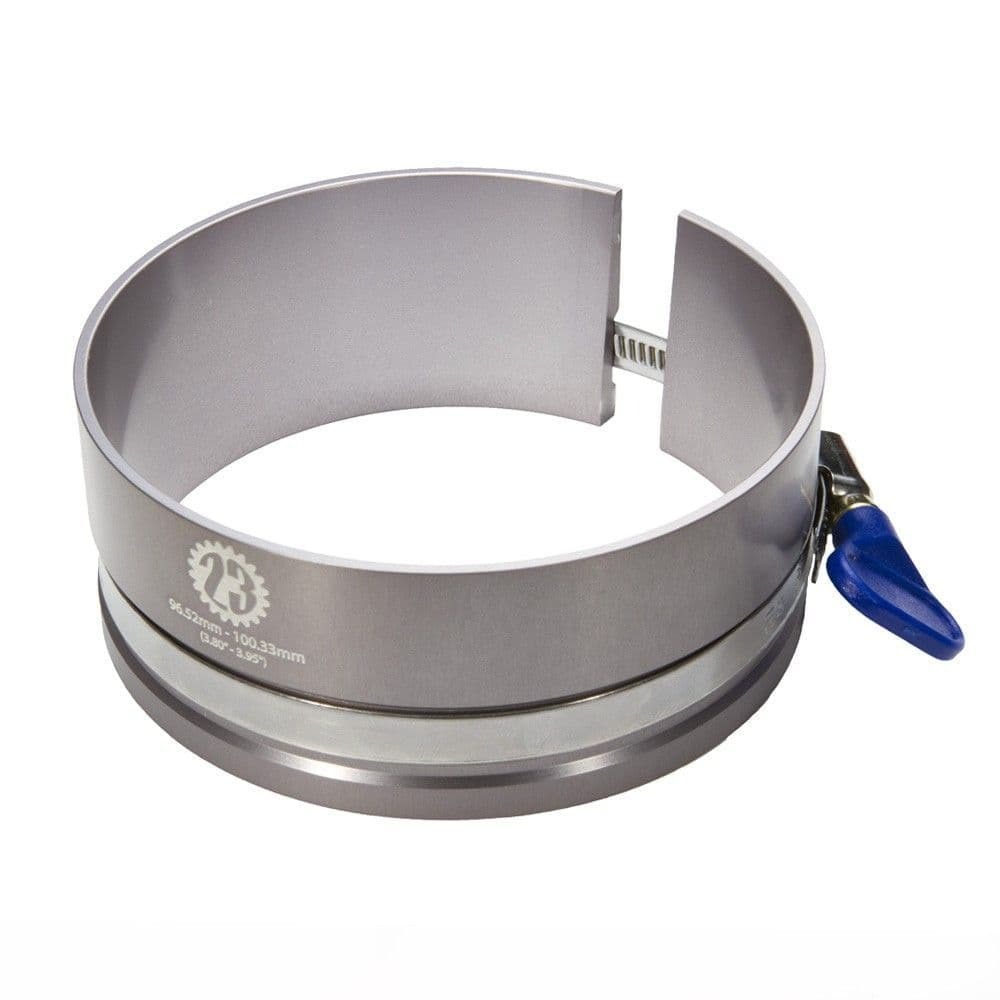
Keeping the Combustion Chamber Clean
A clean combustion chamber prevents piston rings from sticking or losing functionality. Use fuel additives designed to minimize carbon deposits. Avoid low-quality fuel that may contribute to build-up over time. Periodically clean engine components to remove contaminants and debris that could harm piston rings. Clean chambers improve fuel combustion efficiency and extend piston ring life.
Replacing Engine Piston Rings
Replacing engine piston rings is crucial for restoring engine performance and efficiency. Over time, piston rings wear out or become damaged, leading to various engine issues. Knowing when and how to replace them ensures the engine continues to function optimally.
Signs Replacement is Necessary
Several signs indicate it’s time to replace engine piston rings. Watch for the following:
- Excessive Exhaust Smoke: Persistent blue or white smoke points to oil burning due to worn rings.
- High Oil Consumption: Frequent oil top-ups suggest that oil is leaking past the piston rings.
- Loss of Compression: A noticeable drop in engine power indicates poor sealing in the combustion chamber.
- Poor Acceleration: Sluggish performance or reduced power output signals piston ring degradation.
- Knocking Sounds: Unusual noises from the engine may come from damaged or misaligned piston rings.
Addressing these signs promptly can prevent further damage and maintain engine health.
Steps for Piston Ring Replacement
Replacing piston rings requires attention to detail and the right tools. The steps below outline the typical process:
- Prepare the Tools and Workspace: Gather wrenches, screwdrivers, torque wrenches, and piston ring compressors. Ensure a clean and organized workspace.
- Remove Engine Components: Disconnect the battery, drain oil and coolant, and remove the cylinder head and piston assembly.
- Inspect the Components: Check the cylinder walls, pistons, and old rings for damage or wear.
- Install New Piston Rings: Use a piston ring installation tool to fit new rings correctly. Follow the manufacturer’s orientation guidelines.
- Reassemble the Engine: Reinstall the piston assembly, cylinder head, and other components. Tighten bolts to the specified torque.
- Test the Engine: Start the engine to check for proper operation. Look for leaks or unusual noises.
Replacing engine piston rings is a complex task. When in doubt, consult a professional mechanic to avoid further issues.
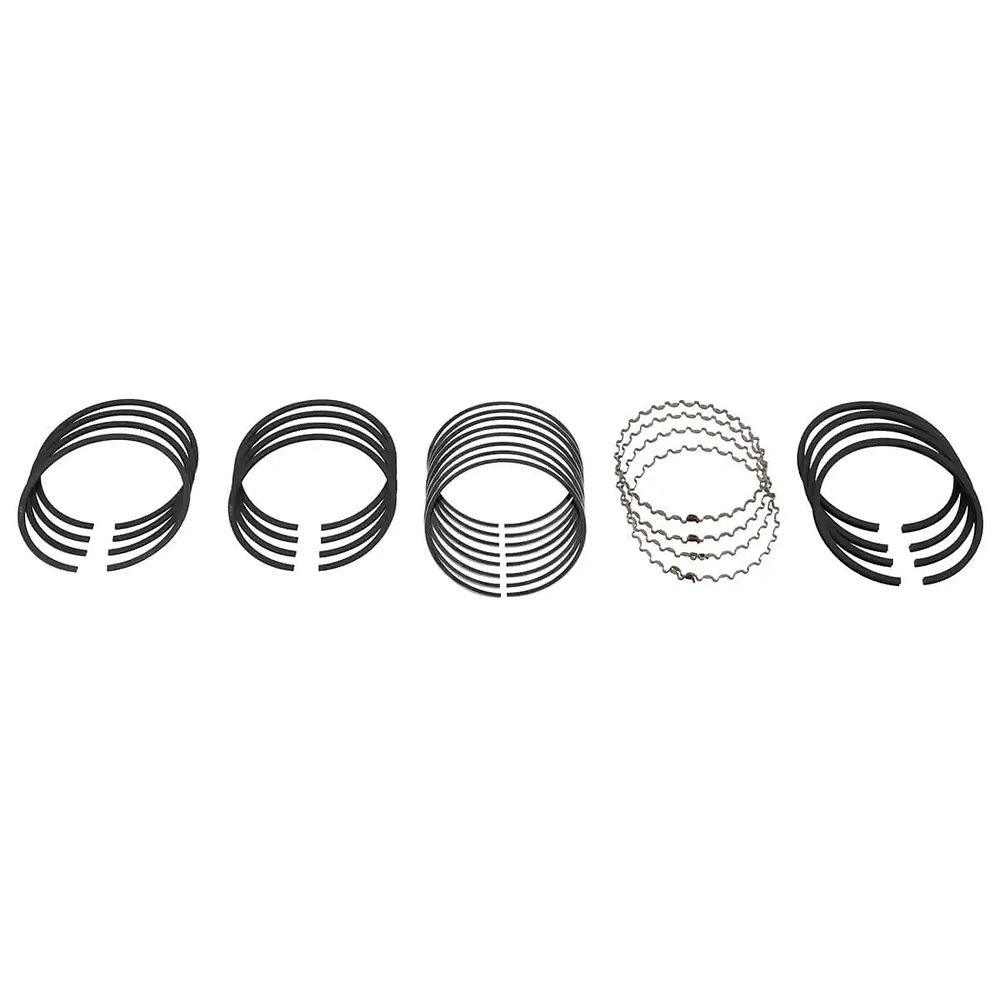
Impact of Piston Rings on Engine Longevity
Engine piston rings play a vital role in enhancing engine life and performance. They ensure smooth operations by reducing friction, managing oil usage, and sealing combustion gases effectively. Their contributions are key to maintaining a long-lasting, efficient engine.
Role in Reducing Wear and Tear
- Minimizing Metal-to-Metal Contact: Piston rings reduce direct friction between pistons and cylinder walls. This prevents surface damage and wear.
- Protecting Cylinder Walls: Properly functioning rings minimize scratches and abrasions caused by debris and contaminants.
- Reducing Heat Stress: They transfer heat from the piston to the cylinder walls, lowering the risk of overheating.
- Ensuring Consistent Operation: Good sealing prevents gas leakage, protecting engine components from uneven pressure and premature wear.
- Extending Component Life: Reduced wear and better heat management increase the durability of vital engine parts.
Enhancing Fuel Efficiency and Performance
- Improving Combustion: Sealed combustion chambers maximize fuel burn, boosting power and efficiency.
- Regulating Oil Usage: Proper oil control reduces waste and prevents oil-fuel mixing in the chamber.
- Lowering Carbon Deposits: Effective scraping and control reduce carbon buildup, keeping the engine cleaner for better output.
- Optimizing Power Delivery: Tight seals ensure consistent pressure, leading to smoother and more powerful engine performance.
- Reducing Harmful Emissions: Efficient fuel combustion decreases pollutants, helping the engine run cleaner over time.
By maintaining the health of piston rings, you can extend engine life and improve overall performance. Regular inspections and proper lubrication are key preventive measures for their longevity.
Selecting Quality Piston Rings
Understanding Material Choices
When it comes time to replace your piston rings, understanding the materials used is essential for ensuring optimal performance. Piston rings are typically made from materials like cast iron, which is known for its durability and wear resistance. Some high-performance applications may use steel or specialty alloys designed to withstand higher temperatures and pressures. Additionally, some manufacturers offer coated piston rings, which can provide improved performance by reducing friction. Familiarizing yourself with the pros and cons of these materials will help you make informed choices about the best piston rings for your engine’s requirements.
Consulting with Professionals
Choosing the right piston rings often necessitates consulting with automotive professionals or experienced mechanics. These experts can advise you on the best options based on your drive style, engine type, and specific performance goals. They have the expertise to recommend brands or products that align with your needs, which can save you time and frustration during the selection process. Furthermore, professionals can provide insights into the compatibility of different piston rings with your engine, ensuring you make a sound investment in your vehicle’s future performance.
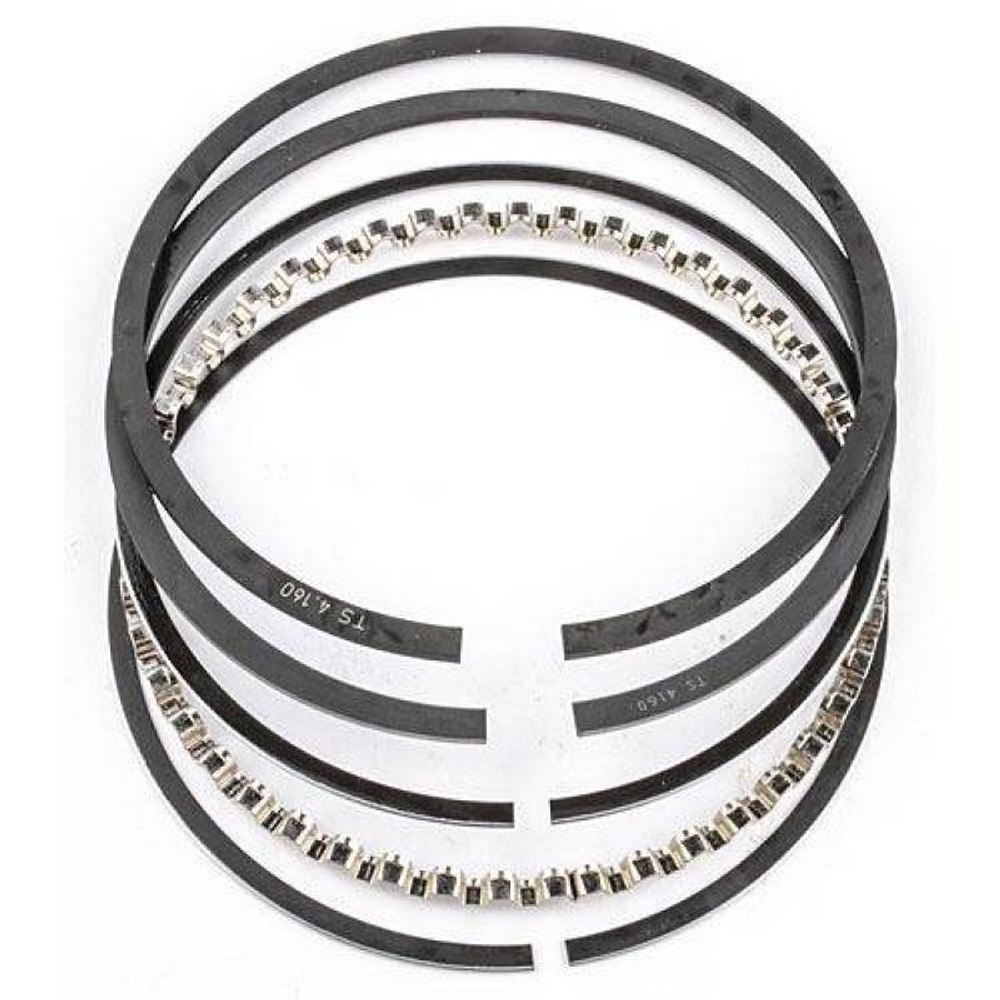
Considering Brand Reputation
Brand reputation plays a significant role in the quality and reliability of piston rings. Opting for established brands with a history of providing high-quality parts can ensure that you receive a product that stands the test of time. Researching customer reviews and experiences can aid in identifying reputable manufacturers. Brands like OEM (Original Equipment Manufacturer) are often reliable because they match the specifications set forth by the vehicle’s manufacturer. Investing in trusted brands may cost a bit more upfront, but they typically promise enhanced performance and long-term reliability.
The Impact of Engine Maintenance on Piston Rings
Building a Routine Maintenance Schedule
Routine maintenance is critical in ensuring the longevity of your engine, including the piston rings. A structured schedule, including regular oil changes and periodic checks on fluid levels, can make a significant difference in how well your engine performs. Pay close attention to oil quality, as dirty or low oil can lead to increased wear on engine components. Establishing a maintenance routine ensures you stay ahead of potential issues and contributes to smoother engine operation. This proactive approach helps maintain the integrity of your vehicle and minimizes long-term repair costs.
Addressing Engine Issues Promptly
When signs of engine trouble appear, addressing them promptly is essential for protecting your piston rings and other components. Ignoring issues such as a check engine light, irregular noises, or a drop in performance can lead to more severe problems over time. By addressing concerns quickly, you can prevent additional wear on piston rings caused by factors like low lubrication or overheating. Staying vigilant helps maintain overall engine health and ensures that your vehicle remains reliable and enjoyable to drive.
Investing in Performance Upgrades
For those seeking to enhance engine performance, investing in upgrades can be beneficial. Performance enhancements, such as high-performance piston rings, can yield significant improvements in power and efficiency. Along with the piston rings, consider other upgrades such as aftermarket exhaust systems, tuning chips, and high-flow air filters that work synergistically to boost performance. Upgrading these components will require thorough research and understanding of your engine’s compatibility. However, the resulting performance gains can transform your driving experience, making it worthwhile.
Conclusion: Embrace Engine Care
Respecting the Role of Piston Rings
In conclusion, engine piston rings are integral to the functionality and efficiency of your vehicle’s engine. Their role in maintaining compression, regulating oil flow, and enhancing reliability cannot be overstated. Regular maintenance and timely interventions when issues arise are vital in ensuring your piston rings continue to function well. By investing time in understanding their importance, you are better equipped to prolong the lifespan of your engine.
A Commitment to Safety and Performance
Taking care of your engine ultimately enhances both performance and safety on the road. A well-maintained engine, with healthy engine piston rings, ensures that your vehicle operates smoothly and efficiently. This commitment to maintenance also promotes a safer driving experience, reducing the likelihood of breakdowns or accidents caused by engine failure. By prioritizing the care of your vehicle, you actively contribute to your safety and the longevity of your investment.
Looking Ahead with Confidence
As you continue your journey as a vehicle owner, it is important to embrace the knowledge gained about piston rings and engine care. Equip yourself with the information necessary to make informed decisions regarding maintenance, repairs, and potential upgrades. With your evolving understanding, gear up with confidence for the open road ahead. The experiences awaiting you in your vehicle can be exciting and fulfilling, and a reliable engine with quality piston rings makes every journey possible. So, take pride in caring for your engine, and enjoy the freedom that comes with being an informed rider!
Leave a Reply